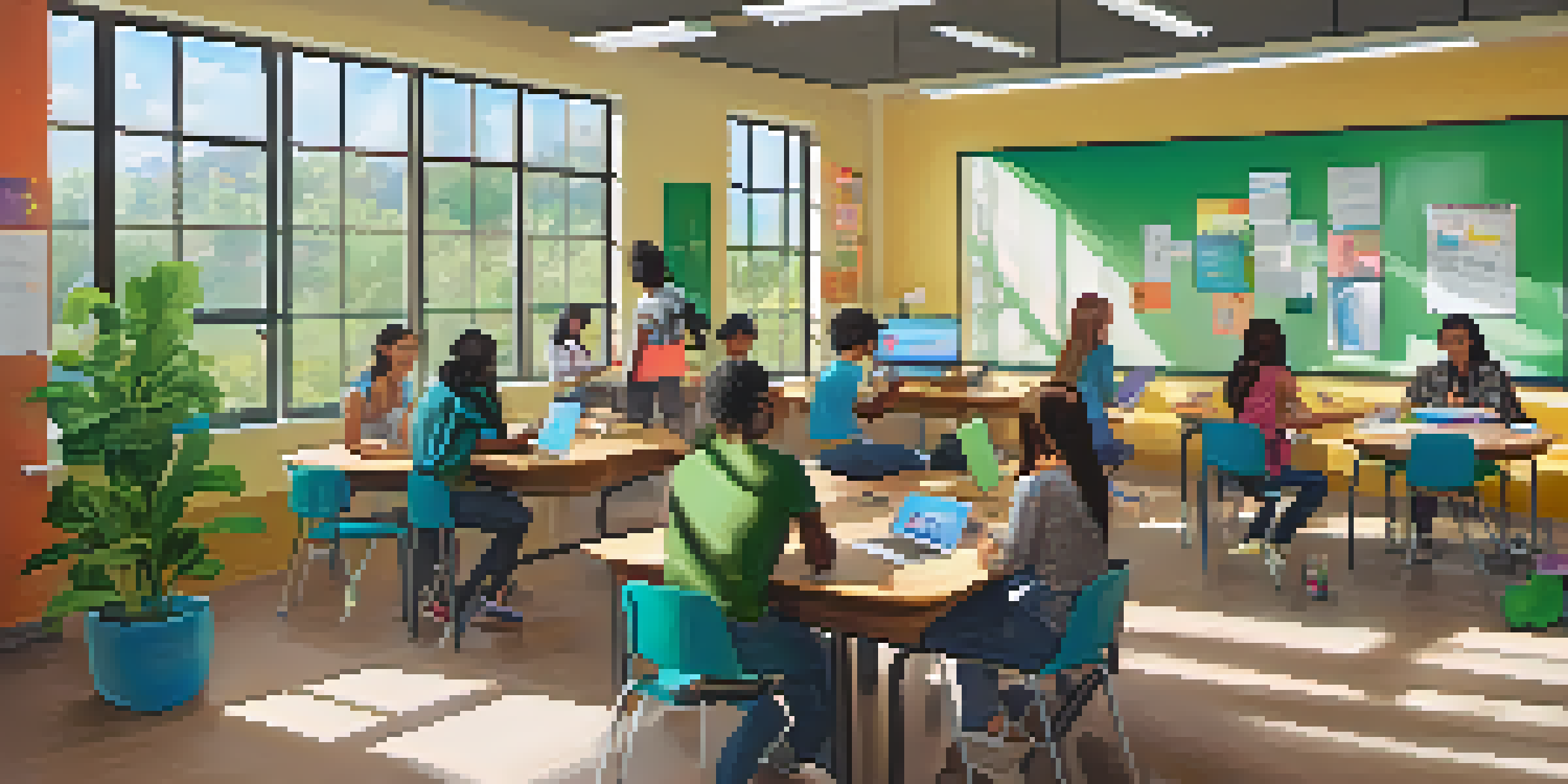Strategies for Developing Collaborative Projects in Blended Learning

Understanding Blended Learning and Collaboration
Blended learning combines traditional classroom methods with online activities, creating a flexible learning environment. This approach allows students to engage with content at their own pace while still benefiting from face-to-face interactions. Collaboration plays a crucial role in this model, as it encourages peer interaction and enhances learning through shared experiences.
Establishing Clear Communication Channels
Effective collaboration starts with clear communication. Establishing dedicated channels, such as group chats or project management tools, ensures that everyone stays informed and engaged. When students have a reliable way to share ideas and feedback, it fosters a sense of community and keeps the project on track.
Blended Learning Enhances Flexibility
Combining traditional methods with online activities allows students to learn at their own pace while benefiting from face-to-face interactions.
Setting Defined Goals and Roles
To avoid confusion and ensure everyone contributes, it's essential to set clear goals and define individual roles within the project. Each member should understand their responsibilities, which helps to streamline the workflow and keeps the project organized. This clarity not only enhances accountability but also empowers students to take ownership of their tasks.
Incorporating Diverse Learning Activities
Blended learning thrives on variety, so incorporating diverse activities can boost engagement. Consider using a mix of group discussions, online quizzes, and collaborative documents to cater to different learning styles. This approach not only keeps the project interesting but also allows students to leverage their strengths in various tasks.
Clear Communication Drives Success
Establishing dedicated channels for communication fosters a sense of community and keeps collaborative projects on track.
Utilizing Technology to Enhance Collaboration
Technology can be a powerful ally in fostering collaboration among students. Tools like Google Docs, Trello, or Zoom facilitate real-time collaboration, making it easier for teams to work together, regardless of their physical locations. Embracing these technologies not only supports effective teamwork but also prepares students for a tech-savvy workplace.
Encouraging Feedback and Reflection
In a collaborative project, feedback is essential for growth. Encourage students to give and receive constructive criticism throughout the process, which can lead to improved outcomes and stronger relationships. Additionally, incorporating reflection sessions after project completion allows students to assess what worked well and what could be improved in future collaborations.
Diverse Activities Boost Engagement
Incorporating a variety of learning activities caters to different styles and keeps students engaged in the collaborative process.
Building a Supportive Learning Environment
Creating a supportive atmosphere is vital for successful collaboration. Encourage students to respect each other's opinions and celebrate their achievements, no matter how small. When learners feel valued and supported, they are more likely to engage actively and contribute positively to the project.
Measuring Success and Making Adjustments
Finally, it's important to measure the success of collaborative projects and make necessary adjustments. This could involve assessing group dynamics, project outcomes, and individual contributions. By regularly evaluating these factors, educators can refine their strategies and improve future collaborative efforts in blended learning.